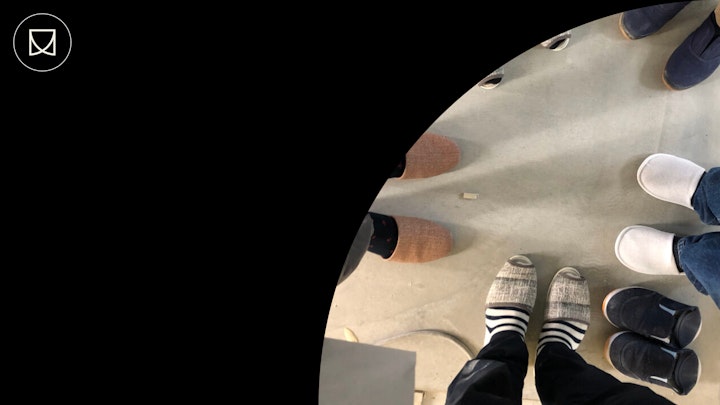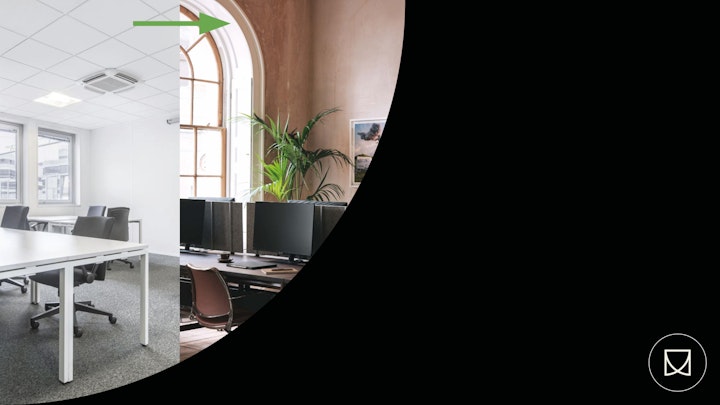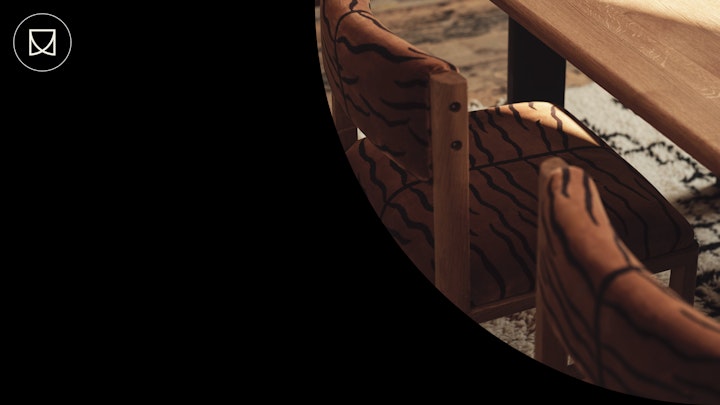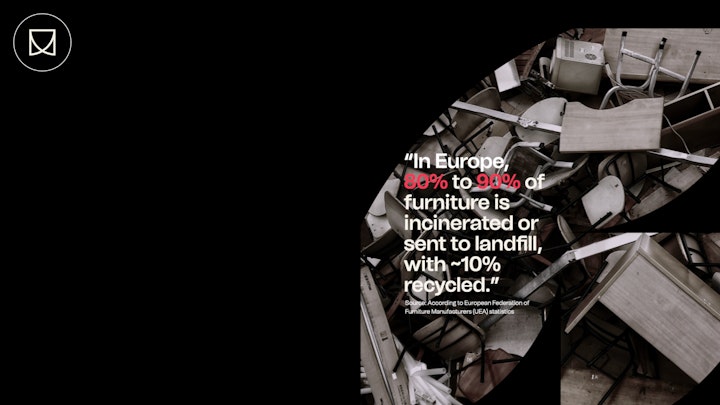Since my last post, I’ve been reflecting on the fact I’m quite fortunate that I can work from home without losing any real productivity (apart from my Son’s appetite for play and destruction). Many of my friends have lost their jobs, been placed on furlough, and left in limbo.
I wonder about the long-term effect this will have on many people's livelihoods, jobs and, particularly, the small business economy. My dad is a London black cab driver (a London institution) struggling like so many of his peers because the streets are empty. With the likely recession to come, I hope that easing the lockdown now will not come too late for these smaller enterprises.
I’m genuinely grateful that remote work ‘works’ for me.
What does this mean for the office environment? Many articles have already been written about what the future office will be like. As I noted in my last post, I will avoid joining in with speculation until I can observe people's behaviour, collate feedback, and try some ideas. It will take some time before things settle into this ‘new normal’, whatever that is.
Lessons From the Past
I’ve been more interested in looking back in time to see if I can find inspiration to help my design process, especially regarding furniture design. Looking back at history for comparisons inevitably led me to the 1918 Spanish Influenza, which is estimated to have killed 1/3 of the world’s population. 😨 Around 40–50 million deaths. No pandemic before or since has resulted in deaths on such a scale. Also, the world had just finished fighting the 1st World War, which ended in November 1918.
From an Office Interior/Furniture perspective, I’ve been thinking, “What was the workplace like around this time?”
Searching online for some visual inspiration, I came across this image of a typist wearing a mask in 1918 October 16th, New York:
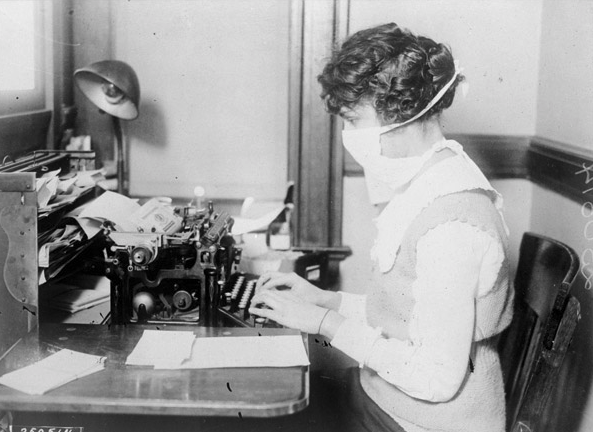
Image Credit: Via Pinterest
Staring at the photo, I began thinking about the objects in the image and the central focus of the worker: the distinctive typewriter! Sitting at my desk in the same position, I thought I might as well start this brief exploration there.
The Typewriter
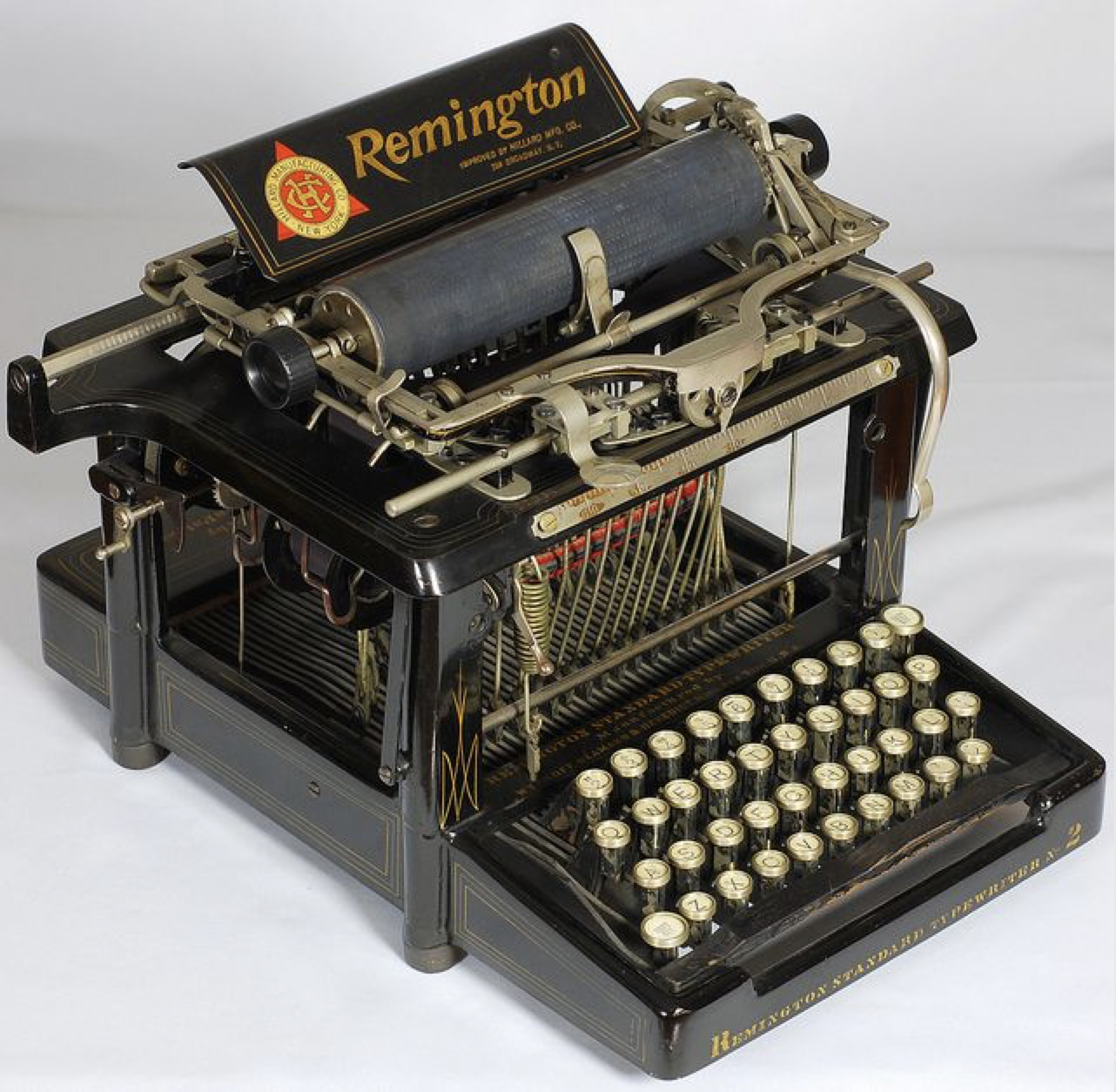
Image Credit: Antique Typewriters
I was surprised to learn that the Sholes & Glidden typewriter was initially made by the former arms and sewing machine producer Remington. Remington wanted to diversify as gun sales slowed after the American Civil War ended in 1865. The first version was launched in 1874 but had to undergo several iterations. It could only type uppercase letters, you could not see what you were typing, and it was considered too expensive for general use.
The updated Remington 2, which debuted in 1878, became the first commercially successful machine where you could toggle between Upper and lower case letters via a ‘shift’ key. Another key feature was the QWERTY keyboard layout that organised the letters in such a way as to promote the productive use of all ten fingers. In the following years, other manufacturers would adopt this system as the ‘universal keyboard’. To this day, we are using the same template with some minor modifications.
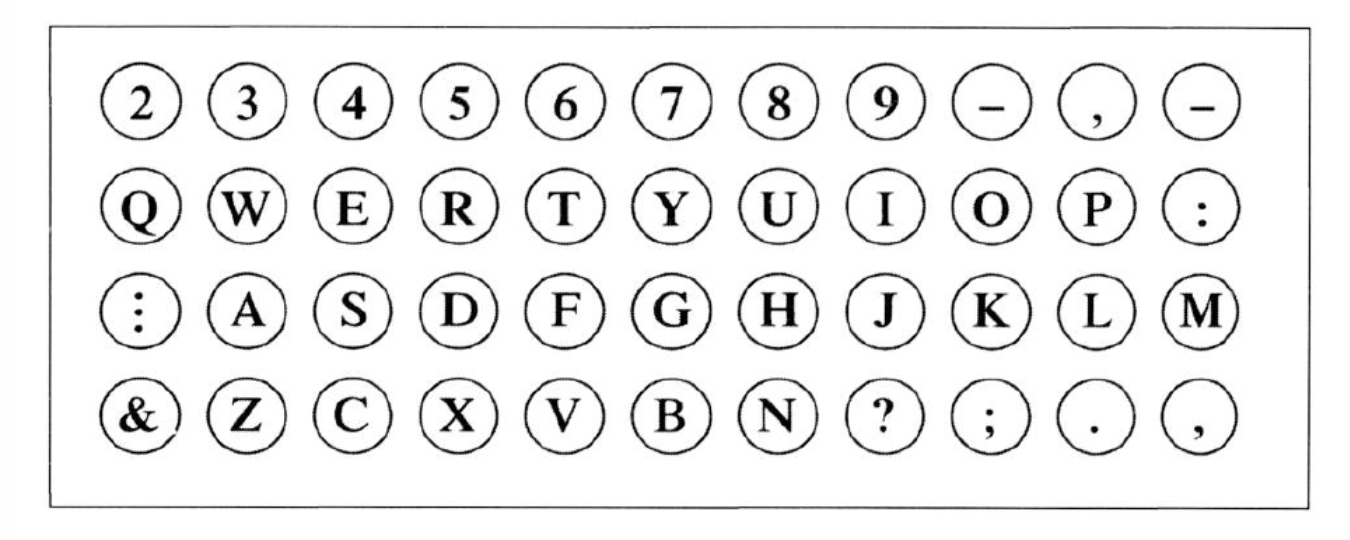
An early QWERTY keyboard layout. Image Credit: Wonderful Writing Machine by Jr. Bruce Bliven (1954)
During this period, which I’m calling the ‘Industrial refinement’ phase (1850–1900), some key innovations made their public debut, many of which are still around today: the sewing machine in 1851, Coca-Cola in 1886, the telephone in 1867, the Vacuum Cleaner in 1899, and many, many more.
By the early 20th Century, the typewriter had developed enough of a history to become an essential piece of office equipment for many businesses. The desks used to accommodate this product were refined and tailored to suit; a foldable lower portion for the typewriter was introduced to aid the typist. Earlier desks were stand-alone ‘extras’ to support the main workstation.
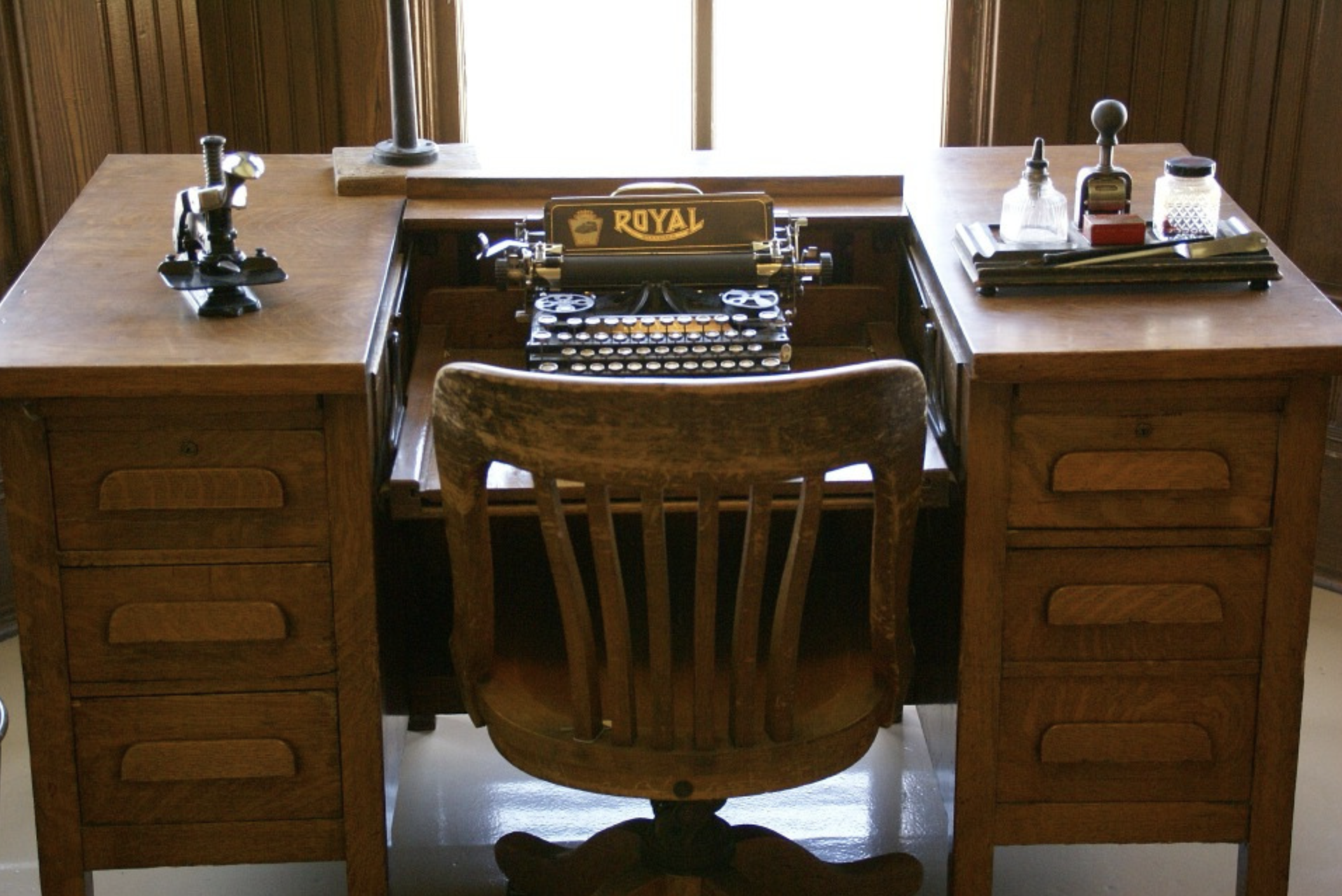
Image Credit: Via Pinterest
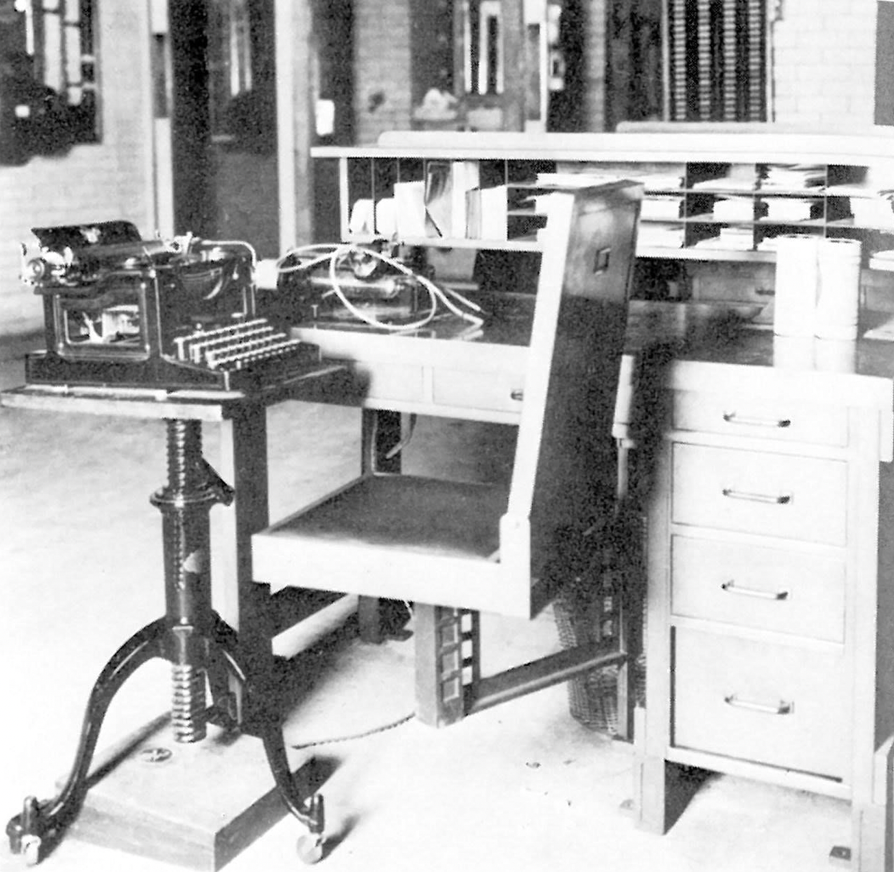
The Larkin Building, Furniture By Frank Lloyd Wright — 1906, Buffalo, New York. Image Credit: Pinterest
The typewriter and its desk were crucial to understanding the workplace and the ‘nature of work’ around 1918 when the Spanish Flu broke out. This development correlates with the rapid growth of the non-manual labour sector, the increase of women entering the workforce (To keep the economy running during the war), and the rise of clerical tasks, known as ‘Office work’.
The Rise of Standardisation
To fully understand the environment, we must examine the ‘Scientific Management Theory’ developed in the late 1880s by American Engineer Fredrick Taylor. Known as ‘Taylorism,’ the goal was to increase production efficiency and ‘organise all work functions’.
In 1910, technical practice was standardised, with many employers following the Taylor method. For these ‘repetitive jobs,’ the main focus was supervision and increasing efficiency. Workers would be evenly spaced along rows of desks inside an open plan room, all facing the same direction as the supervisor. All distractions were removed, so the sole focus was their work.
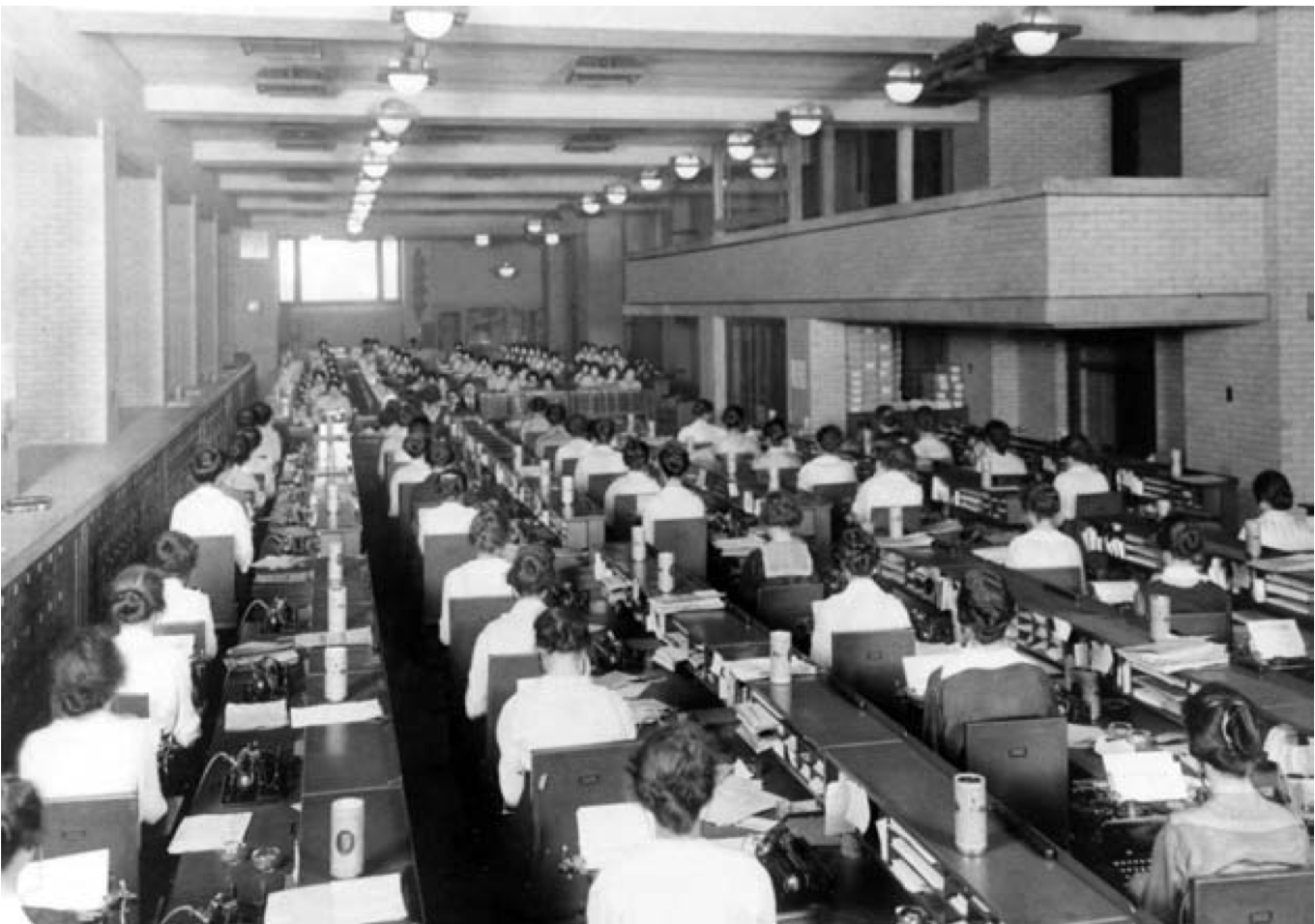
Larkin Administration building, Typing department, by Frank Lloyd Wright — 1906, Buffalo, New York. Image Credit: Pinterest
This office design trend continued into the 1920s before becoming obsolete by the decade's end. Although there are some obvious differences, today's open-plan office shares many of these Taylorist ideals—rows of desks with workers staring at a screen instead of a typewriter.
From Office Standardisation to Remote Working
The impact of Taylorism (workplace strategy for the early 1900s) on employers cannot be overlooked. They predominately commissioned the Architects and planners to create an environment that mimicked the factory production floor rather than consider the well-being of the employees.
The birth of standardisation and repetitive work was a natural transition from the industrial age. Maybe the rigidity of the ‘Taylorist’ office layout (desks facing the same direction and heavily supervised), combined with the necessity for workers to earn an income, meant that wearing a mask was enough to control the spread of any virus. Compared to our flexible open spaces and agile work styles. Don’t get me wrong; I am not advocating returning to rows of desks and clinical layouts.
It’s also quite ironic that the typewriter and the original telephone are the historical foundations of our current laptops and smartphones, which allow us to work anywhere. 120 years ago, both technological advancements took people from the factory floor to the office, and the workers were’ tethered’ and micromanaged.
I wonder if this public health issue will inadvertently provide evidence that ‘remote working’ is a viable possibility at scale for many businesses without losing productivity. Beyond the noise and current increase in speculation, this has been possible for a decade or so. As we start to feel the ‘macroeconomic’ strain, more and more businesses will be looking to cut back, creating a perfect storm for working remotely. However, I’m optimistic that our human need to assemble, collaborate & socialise will become central to whatever our new office is in years to come.
Thanks for reading.


